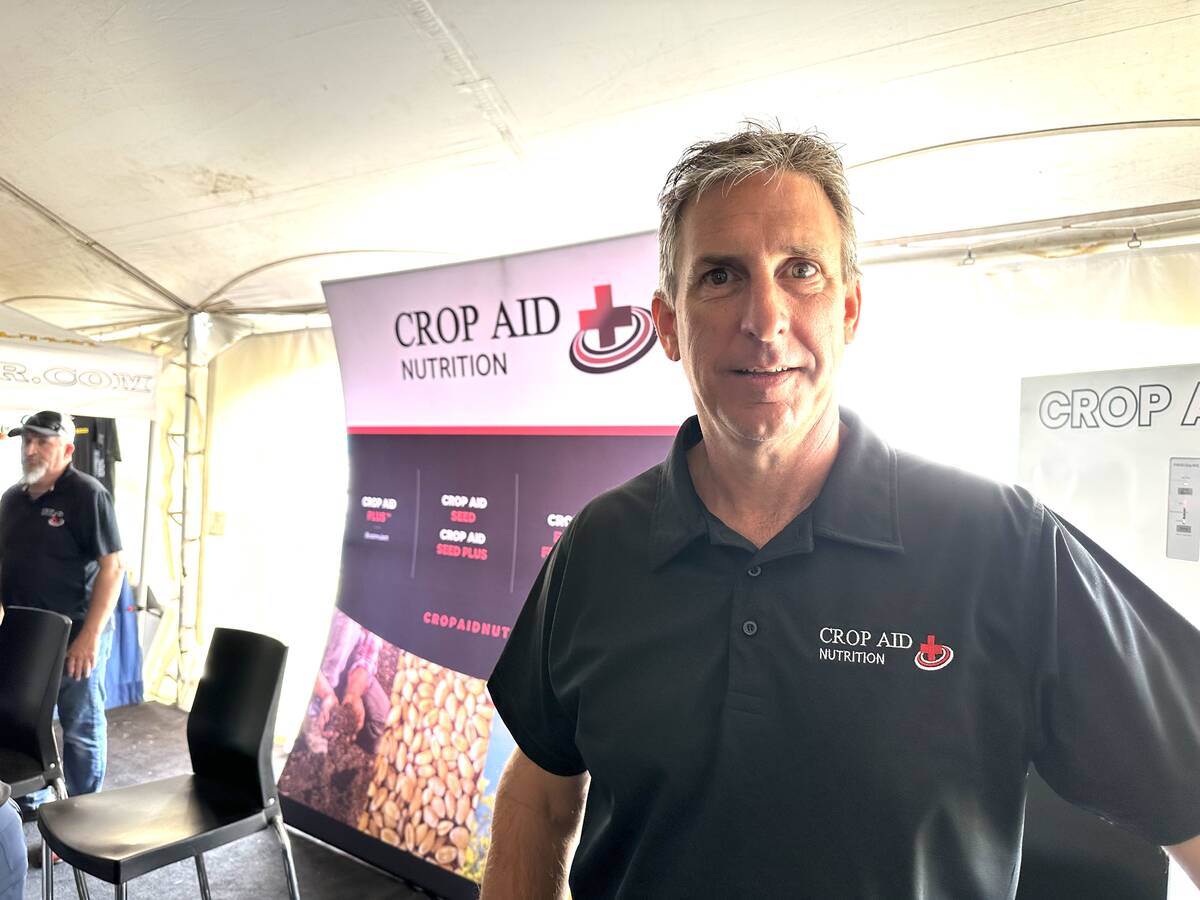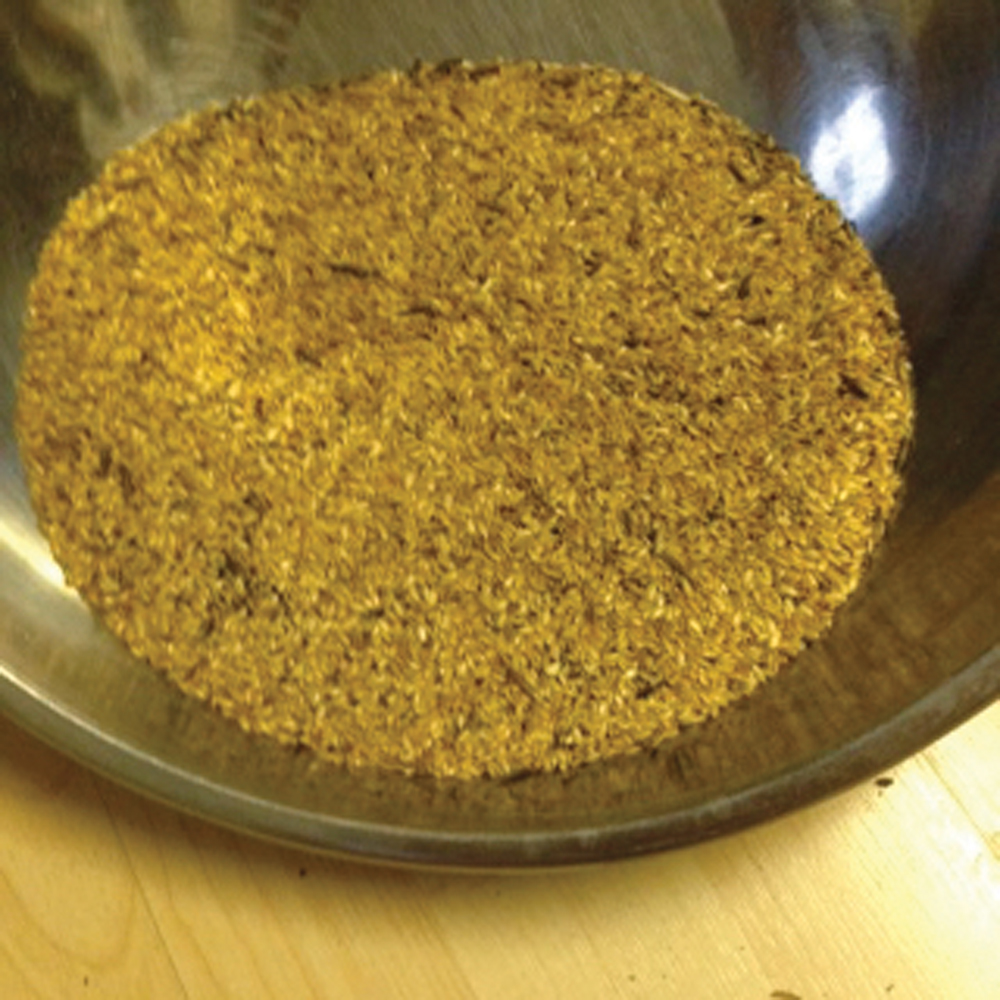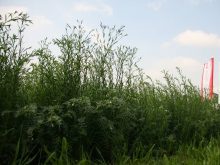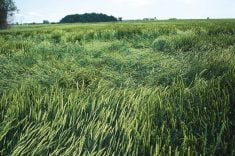“It’s like being a Klondike gold miner looking back in the hopper and seeing all that gold,” says Robert MacGregor, organic farmer and pedigreed seed grower. MacGregor is talking about harvesting golden flax. But just like gold prospecting getting your hand on some “colour” is not for the faint of heart. Something MacGregor knows well.
Golden or yellow flax has experienced a surge of interest over the past several years as health-conscious consumers have begun to add more flax to their diets. In 2014, Health Canada approved a health claim that eating ground whole flaxseed lowered blood cholesterol levels which is a major risk factor for heart disease.
Read Also

New soil treatment targets saline patches in fields
Crop Aid SS is a Saskatchewan-made spray that’s intended to help farmers manage saline soils by leaching salts away from the root zone.
The claim applies to both brown and golden flax, but it’s that Klondike gold colour that consumers are looking for in their grocery aisle. This consumer preference has helped farmers selling (organic or conventional) golden flax realize a premium of $3 to $5 per bushel over brown flax.
Flax marketers are also seeing a shift toward golden flax in overseas markets. Richard Zacharias, general manager of Prairie Flax Products in Portage La Prairie, Man., has watched his exports of golden flax grow. “Until about 2014, golden flax only made up around five to six per cent of our business, but interest from Asian markets (especially Korea) has increased our sales of golden flax.” Zacharias, who also markets flax to the US, Europe, Latin America and the Caribbean, estimates that the crop now represents about 25 to 30 per cent of his company’s sales.
The big challenge for marketers like Zacharias is sourcing enough golden flax to meet consumer demand. “We found there was a shortage of product earlier in the year,” says Zacharias. “Until about mid-summer, when we were able to find some old crop before this year’s harvest.”
Getting the seed
Producers have also had trouble sourcing golden flax seed. “I had producers calling me up even before I had any golden flax seed for sale,” says MacGregor, who farms by Garrick, Sask., near Choiceland. He adds it was especially difficult for organic producers because other seed suppliers were not interested in supplying the organic market. It was this need that compelled MacGregor to look into the matter.
But as MacGregor found there are fewer varieties of golden flax available to producers. This is because for years the yellow seed coat trait was used as a phenotypic (grade) marker for Solin varieties of flax. Solin or Linola flax varieties were developed with low alpha-linolenic fatty acid (ALA) levels (roughly three per cent), which gave the oil higher solidification temperatures which was suitable for the margarine industry. However, the market for Solin didn’t materialize and in 2013 all Solin varieties were deregistered. This decoupled the yellow seed trait from Solin.
Today, there are only a few registered varieties of golden flax. MacGregor was able to get his hands on some AC Nugget in 2015. In 2016, he acquired the license for a new variety of golden flax, CDC Melyn, which was developed by University of Saskatchewan flax breeder Helen Booker and her team of researchers.
Yet another wrinkle hit this fall when MacGregor’s two acres of CDC Melyn were buried in an early October snow storm. MacGregor spent the rest of October and November waiting for conditions to improve. He was finally able to harvest the crop in December, once temperatures plunged and freeze dried the seed. 2016 will be a lost year for MacGregor, but he says he’ll be back at it next year trying to multiply his seed. And, with some luck, he’ll be able to offer producers registered CDC Melyn in the 2019 crop year.















